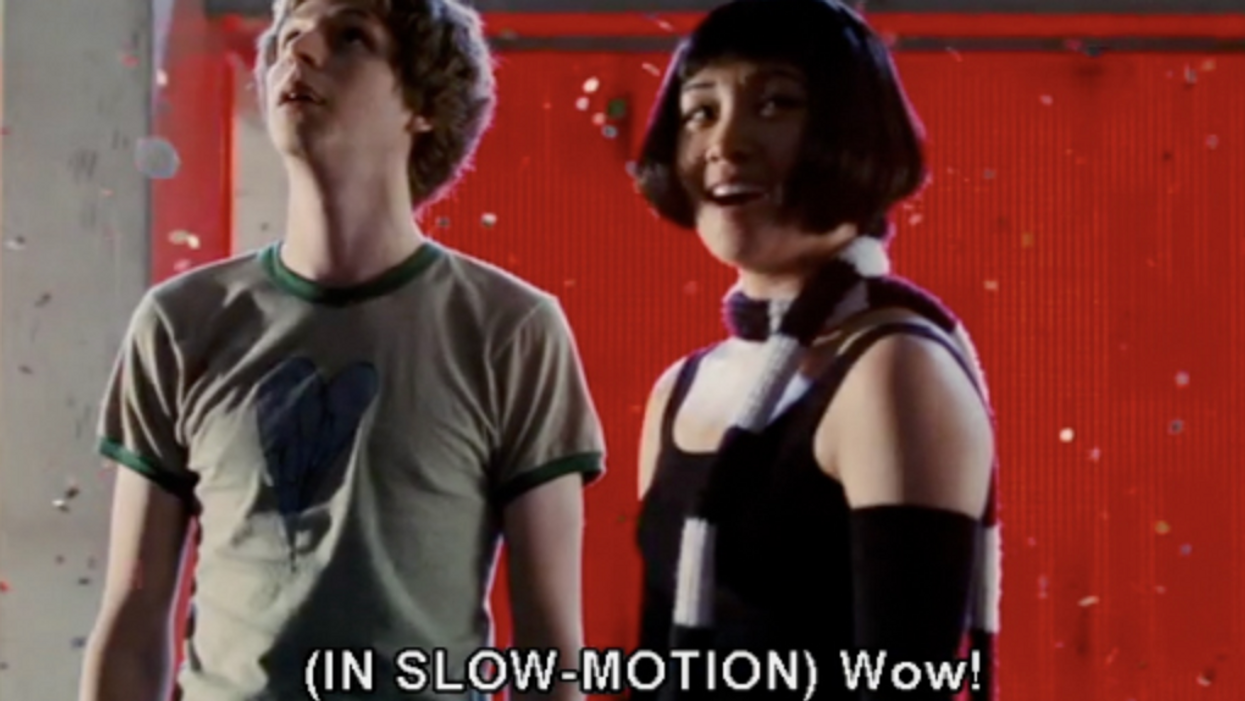What Are 'Parentheticals' and When Do I Use Them in My Script?
Learning proper screenwriting formatting is essential to looking like a pro, and part of that is defining and using parentheticals correctly in your screenplays.

Working on great dialogue is hard enough. How you communicate complex emotions like sarcasm, snark, and even dictate to whom someone is talking to in a crowd of people is the next level stuff. How do you execute all of that?
Enter the screenwriter's best friend, a parenthetical.
Parentheticals or "wrylys" are the secret weapons to make sure your intentions on the page are reflected within the story.
Understanding how they work, and how to use them is critical to getting your best work on the page. So let's get into it!
Parenthetical definition
What is a parenthetical?
Parentheticals are words written under a character's name in dialogue. They are often referred to as "wrylys" because they are adjectives used to describe how someone says a line or they are verbs that give an actor or actress some kind of action to do while they say the line.
These words appear in the middle of the parentheses.
They look like this:

How do I Format Parentheticals in Screenwriting?
It depends on your screenwriting software.
Programs like Final Draft you can tab over after you hit enter, or use tab+P as a shortcut.
Others, like Highland 2, require you just write inside the parentheses (like so).
If you're using Word or other software, parentheticals are left indented at 3.0" and the right margin is 3.5." Parenthetical remarks are NOT centered under the character name. They go just to the left.
When do I use Parentheticals in Screenwriting?
As I mentioned above, you use these to describe an emotion or an action. You don't want to put them on every line of dialogue, that would be insane to read, and take away from the actor's interpretation. But you do want to put them in during specific circumstances where you really want to provide an emphasis on what's happening.
It helps the reader, and it helps the actor.
Again, John August has the standard rules and opinion on the subject here:
"Screenplays are meant to be read-by directors, producers, editors and countless other creative types-and it’s the screenwriter’s job to communicate crucial details about how the movie looks, sounds and feels. But that doesn’t mean you script every look, every turn, every smile. Screenwriting is the art of economy, and overusing parenthetical comments will not only break the flow of the dialogue, they’ll drive the reader crazy. If you find you’re using three or more per page, look at whether the dialogue itself is giving enough emotional information. If characters are obviously arguing in a scene, an (angrily) comment is probably unneeded, but you might need to highlight a line that is (sympathetic) or (withering) when it could read either way."
What's next? Try our Free Screenwriting Seminar!
Screenwriting is hard. But to become a filmmaker, you need to learn script writing to master storytelling. We'll give you free lessons.
Many people come to No Film School because they want to get information about cameras, gear, and screenwriting. We’re aware that the luxury of attending film school is not available to most of the world, so we do our best to keep you all up to date on what’s out there and how you can shoot and create with your utmost potential when filmmaking.
But what’s at the root of all filmmaking?
Storytelling and Screenwriting.
















